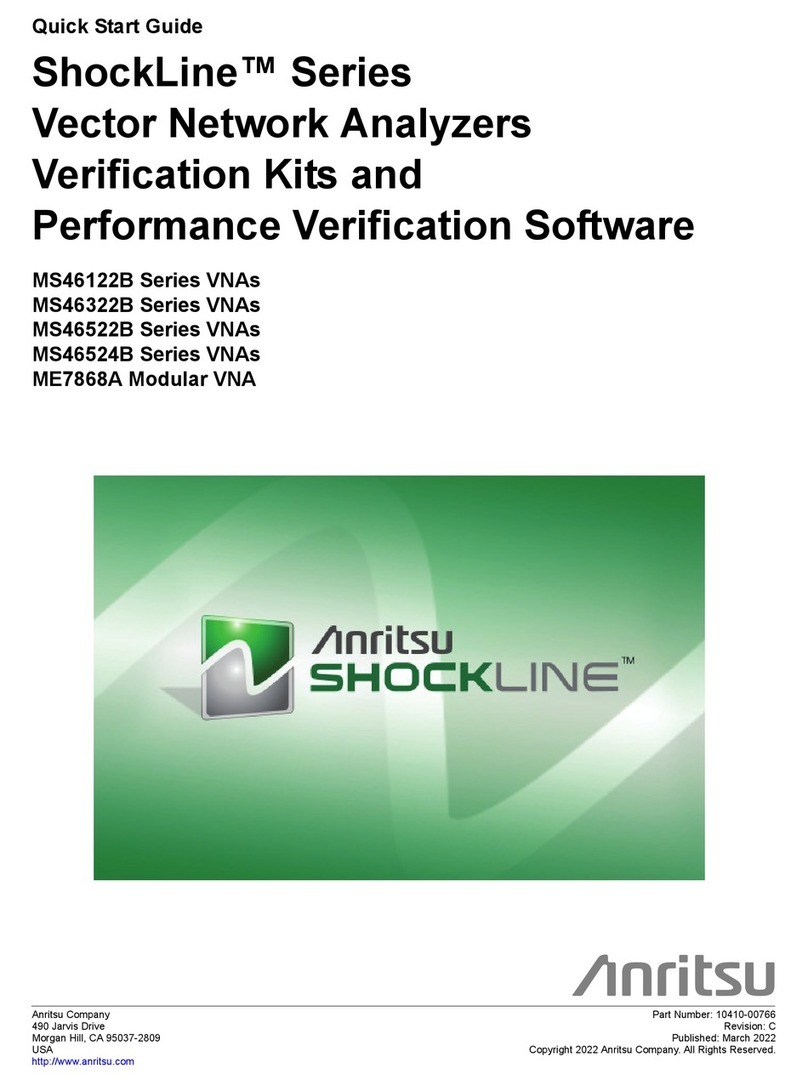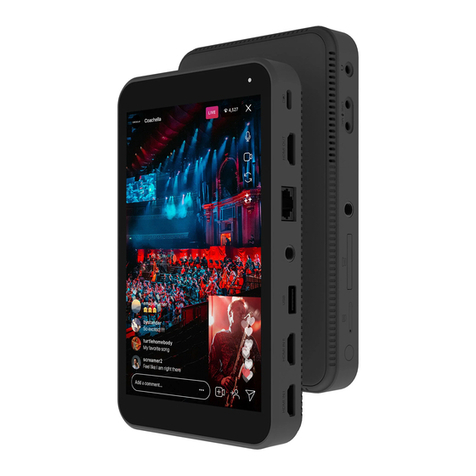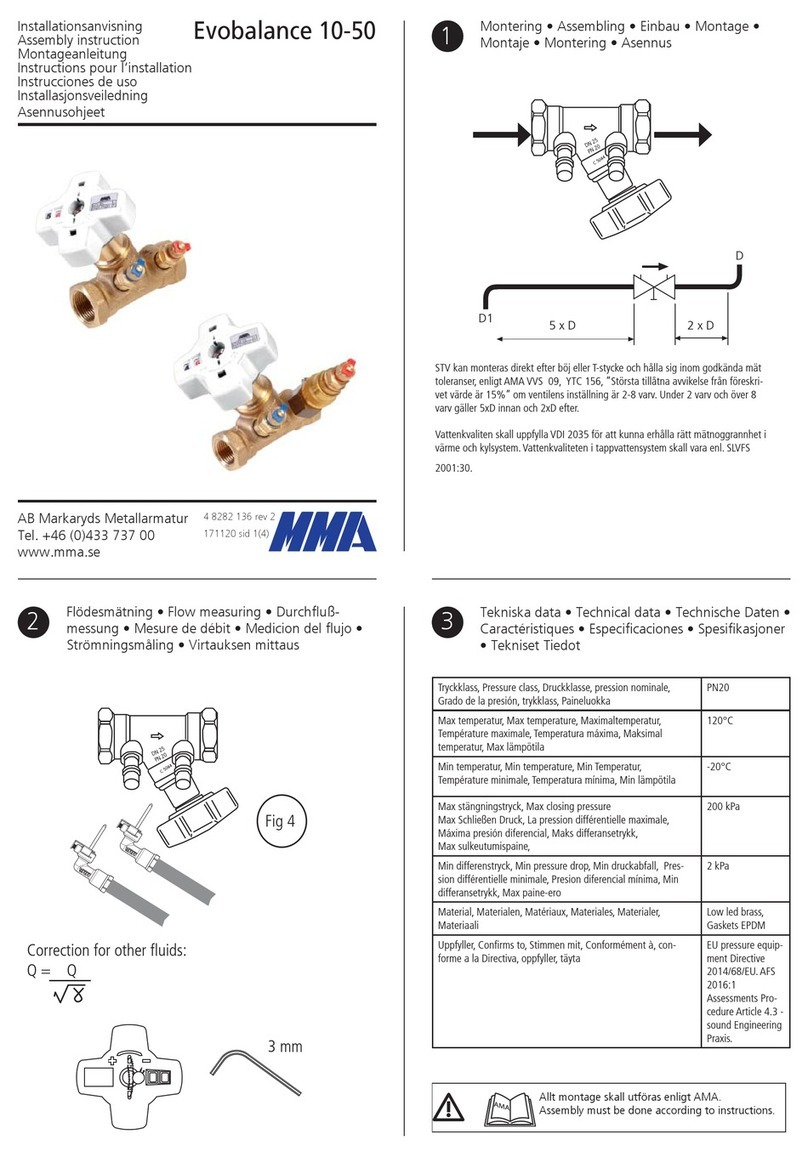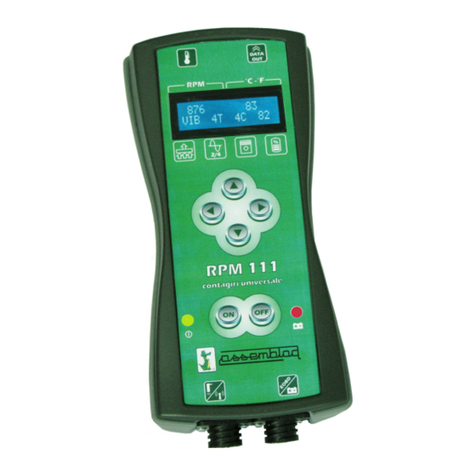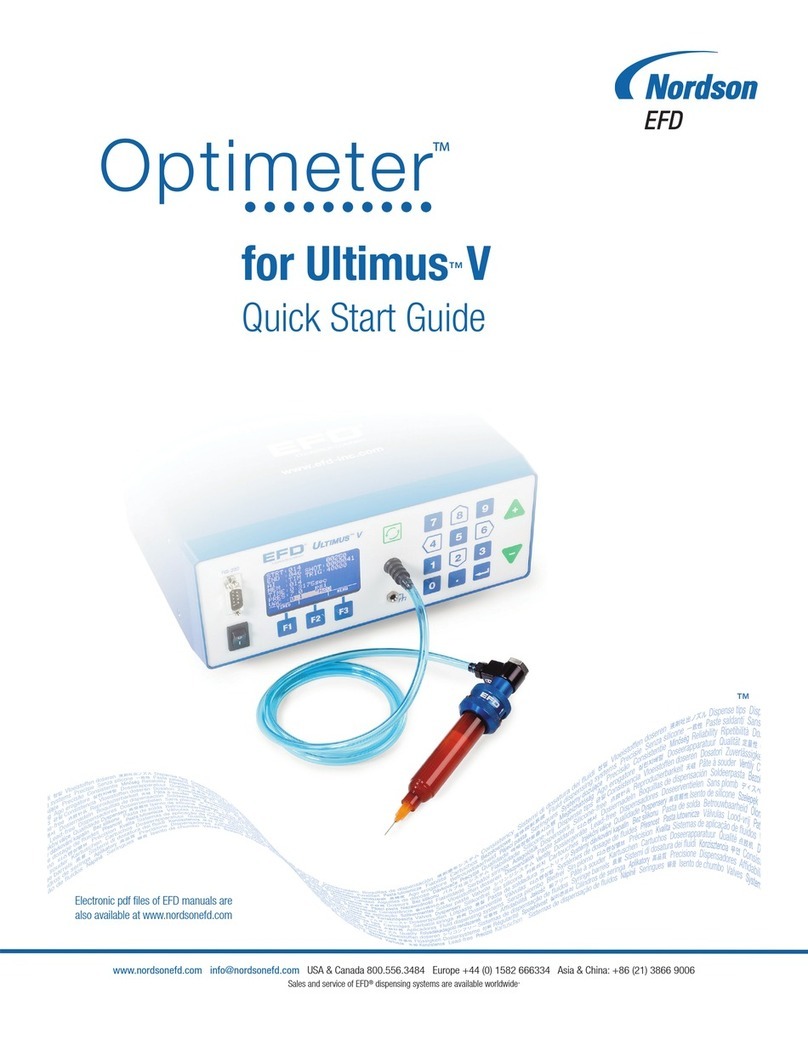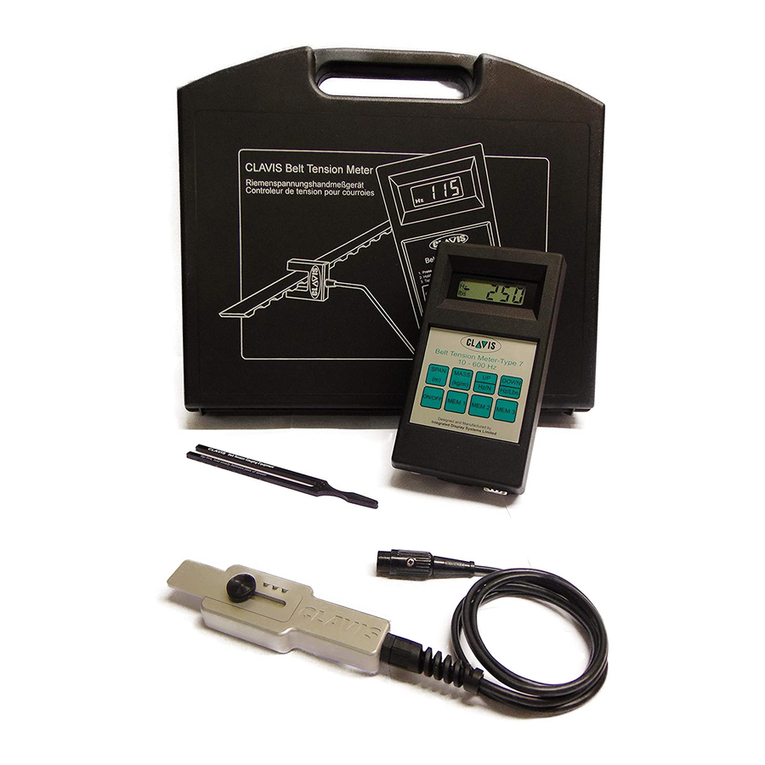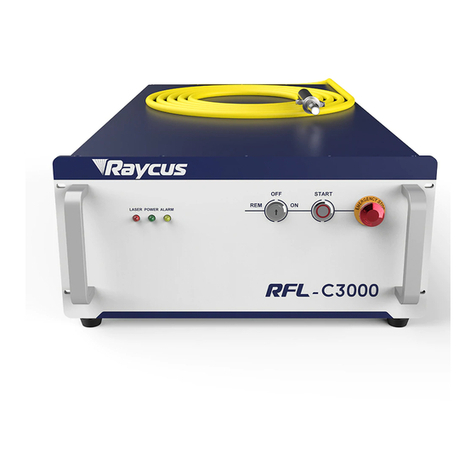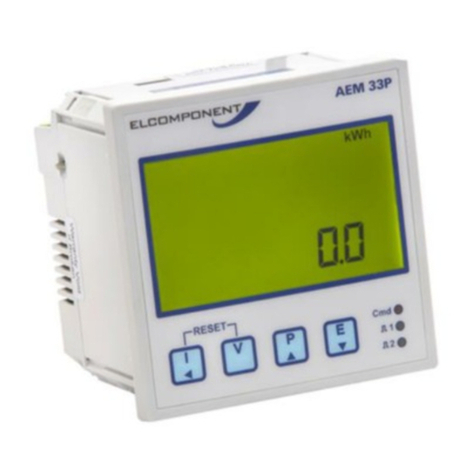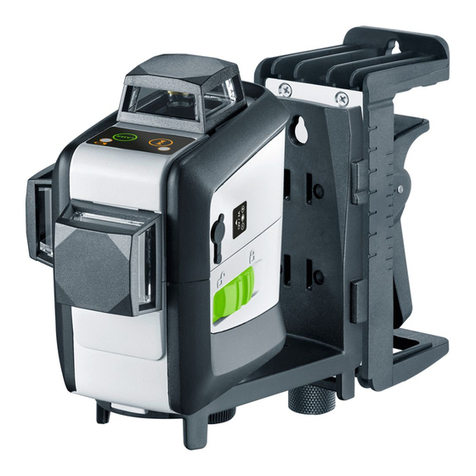Bionix B4000 User manual

INNOVATIVE SOLUTIONS FOR EVERYDAY PROBLEMS
B4000 Bed System
Measurement Device
INSTRUCTION MANUAL

Introduction
In 2006 the FDA, with the help of the Hospital Bed Safety
Workgroup issued a guidance document entitled, “Hospital Bed
System Dimensional Guidelines to Reduce Entrapment”. These
guidelines aid in the design of new bed systems and assess
entrapment risks associated with hospital bed systems. In
response to these guidelines, Bionix offers the innovative Bed
System Measurement Device.
Test Methods
Zone 1:
Potential head entrapment within the rail.................................... 5
Zone 2:
Potential head entrapment between the bottom of the rail
and the top of the compressed mattress, and between
the rail supports or next to a single support.................................. 7
Zone 3:
Potential head entrapment between the edge of the
mattress and the inside of the rail...................................................... 9
Zone 4:
Potential neck entrapment between the top of the
compressed mattress and the bottom of the rail
at the end of the rail................................................................................. 11

54
Assemble and Disassemble the Cone
and Cylinder Tool
To disassemble:
1. Turn the knob to fully loosen and remove the connection shaft.
2. Pull the cylinder from the cone.
To assemble:
1. Align the red and green areas of the cone and cylinder.
2. Insert the connection shaft of the cone into the cylinder.
3. Turn the connection knob to tighten.
Digital Scale
Use the digital scale to apply 12 lbs of force to the cone in
Tests 1 and 2. At the small end of the cone tool, insert the scale
hook into the metal loop. Pull the scale slowly until the needle
points to 12 lbs.
Considerations for all Tests
• Bed Occupancy: For ease of mattress movement and
measurement, the patient should not be in the bed during the
measurement procedures.
• Bed Height: To avoid unnecessary bending or back strain, put the
bed at a comfortable working height position.
• Bed Wheels: To prevent movement of the bed during
testing, lock the wheels.
• Linens/Sheets: Assess the bed with sheets in place for
typical patient care. Remove any pillows.
• Personal Safety: To avoid injury, use care when pulling the tool
through openings in the bed rails. If the tool suddenly pulls
through, you could lose your balance and fall.
Always use the safety strap to keep the tool from injuring your
feet if it falls.
• Borderline Decision: For some tests, it may not be clear whether
the bed system passes or fails the test. Testers can get different
results for the same bed system. This is because mattresses vary in
softness and people handle tools slightly differently. If a test is a
close call, and you have trouble deciding whether the bed system
passes or fails, make your best decision and mark the result with
an asterisk (*) next
to your answer to show that it was a close call.
• Order of Tests: Do the tests in any order you wish, as long
as you do all of the tests on all of the rails.
• Intermediate Rail Position: Some rails have an intermediate
stopping position or a high and low locking position. Follow the
individual test instructions, which may require testing the rails at
all positions.
Test Methods
Zone 1: Potential head entrapment within the rail
The tools needed to do this test include the cone with safety
strap and spring scale.
Prepare for Test 1:
1. Lock the wheels.
2. Put the bed in the flat, horizontal position.
3. Fully raise all bed rails.
4. Put the bed at a comfortable working height position.
Do Test 1:
1. Attach the safety strap of the cone to the rail being tested.
Make sure the strap is short enough to keep the tool from
injuring your feet if it falls.
2. From inside the rail, insert the cone, small end first, into
the largest opening in the rail. Try to pull the tool through
Figure 2: Use of digital scale.
Figure 1: Disassembly and assembly of the cone and cylinder tool.

76
the space (figure 3).
3. If the tool does not pull
through freely, attach the
spring scale to the end of the
cone, and try to pull the tool
through the rail by pulling on
the attached spring scale using
12 lbs. of force. Use care when
pulling. If the tool
suddenly pulls through the
opening, you may lose your
balance and fall, or the tool
may fall on you.
4. Repeat steps 2 and 3 to check
all other openings within
the same rail. - Repeat test on all Rails
5. Interpret test result and record the results on the data sheet.
Interpret Test 1 Results:
If the large end of the cone does not pass through any of the
openings, this space passes the test (figure 4a).
If the large end of the cone does pass through any of the
openings, this space fails the test (figure 4b).
If a test is a close call, and you have trouble deciding whether
the bed system passes or fails, make your best decision and 3
mark the result with an asterisk (*) next to your answer to
show that it was a close call.
Repeat Test 1:
On the other rails: Repeat the test for all other rails on the bed.
Figure 3: Test 1, within rail.
Figure 4a:
Test 1 Pass, large
end of cone does
not pass through
rail opening.
Figure 4b:
Test 1 Fail,
large end
of cone does
pass through
rail opening.
Zone 2: Potential head entrapment between the
bottom of the rail and the top of the compressed
mattress, and between the rail supports or next to a
single support.
The tools needed to do this test include the cone with safety strap
and spring scale.
Prepare for Test 2:
1. Lock the wheels.
2. Put the bed in the flat,
horizontal position. Fully
raise all bed rails.
3. Put the bed at a
comfortable working
height position.
Do Test 2:
1. Firmly push the
mattress away from
the rail being
measured until it stops.
2. Identify the space where
the test will be done (see
Figure(s) 5a and 5b).
3. Raise and lower the head
and foot sections of the
bed. If the spaces where
the test will be done don't
change as the
bed moves, the test will be done in the flat position.
a. If the space changes when the head and foot sections are raised
and lowered, the test will be done in the bed position where the
space is the largest.
4. Attach the safety strap of the cone to the rail being tested.
Make sure the strap is short enough to keep the tool from injuring
your feet if it falls.
Figure 5a: Test 2, between rail
and top of compressed mattress.
Figure 5b: Test 2, for single support.
Siderail
Support

98
5. From the inside of the rail, insert the cone, small end first, into the
gap between the mattress and the lower edge, between the rail
supports. Let the cone compress the mattress. Do not force the
cone into the area.
6. Attach the spring scale to the loop on the cone.
7. Pull on the spring scale with 12 lbs of force at any angle that
increases the chances of the cone going through the space. Use
care when pulling. If the tool suddenly pulls through the opening,
you may lose your balance and fall, or the tool may fall on you.
Observe whether the large end of the cone passes through the
opening. - Repeat test on all Rails
8. Record the results on the data sheet.
Interpret Test 2 Results:
If the large end of the cone does not pass through the opening,
this space passes the test (figure 6a).
If the large end of the cone does pass through the opening,
this space fails the test (figure 6b).
If a test is a close call, and you have trouble deciding whether
the bed system passes or fails, make your best decision and
mark the result with an asterisk (*) next to your answer to
show that it was a close call.
Repeat Test 2:
On the same rail: If the rail has intermediate locking positions,
do the test for every intermediate position. On the other rails: Do
the test for all other rails on the bed, including intermediate and
raised positions.
Figure 6a.
Pass, large end
of cone does not
pass through rail
opening.
Figure 6b.
Fail, large end
of cone does
pass through
rail opening.
Zone 3: Potential head entrapment between the
edge of the mattress and the inside of the rail.
The tools needed for this test include the cone with safety strap.
Prepare for Test 3:
1. Lock the wheels.
2. Put the bed in the flat, horizontal position.
3. Fully raise all bed rails.
4. Put the bed at a comfortable working height position.
Figure 7a: Test 3, between mattress and inside of rail.
Figure 7b: Test 3,
turning the cone.
Figure 7c: Test 3,
tilting cone.
Do Test 3:
1. Firmly push the mattress away from the rail being measured until
it stops.
2. Put the cone near the rail being tested and attach the safety strap.
Make sure the strap is short enough to prevent the
tool from injuring your feet if it falls.
3. Put the cone horizontally in the gap. Do not push the tool down
into the gap (figure 7a).
4. Turn the cone until the line on the end is horizontal (figure 7b).
5. Let the cone sink into the space by its own weight. If the cone is
tilted, use one hand to gently level it (figure 7c). Do not push the
tool down into the gap. Note: If a mattress stop, rail support, or
other structure keeps the cone from sinking in the gap, put the
cone tool at a different location along the rail where there is no
interference.

1110
Figure 8a: Pass, line
above mattress.
6. Determine whether the cone’s center sinks completely
below the surface of the mattress. - Repeat test on all Rails
7. Interpret test result and record the results on the data sheet.
Interpret Test 3 Results:
If the line across the flat end of the cone is above or even with
the surface of the mattress, the space passes the test (figure 8a
and 8b). If the line across the flat end of the cone is below the
top surface of the mattress, the space fails the test (figure 8c).
If a test is a close call, and you have trouble deciding whether
the bed system passes or fails, make your best decision and
mark the result with an asterisk (*) next to your answer to
show that it was a close call.
Repeat Test 3:
On the same rail: If the rail has any intermediate positions,
do the test at every intermediate position.
On the other rails: Do the test for all other rails on the bed,
including the intermediate positions.
Figure 8b: Pass, line
even with mattress.
Figure 8c: Fail, line
below mattress.
Zone 4: Potential neck entrapment between the top
of the compressed mattress and the bottom of the
rail at the end of the rail.
The tools needed for this test include the assembled cone
and cylinder with safety strap.
Prepare for Test 4:
1. Lock the wheels.
2. Put the bed in the flat, horizontal position.
3. Fully raise all bed rails.
4. Put the bed at a comfortable working height position.
5. Do the test on the end of the
rail (figure 9). Test the rails in
any order you choose. If the
bed has split rails, you may
need to lower the rail next to
the one being measured to
make room for the tools.
Do Test 4:
1. Firmly push the mattress
away from the rail being
tested until it stops.
2. Attach the safety strap of the
cone tool to the rail being
tested.
3. Just beyond the end of the
rail, rest the cone portion of
the cone and cylinder tool on
the mattress.
Note: If the cylinder tool
cannot fit into an area
between the head or
footboard and the end of
a rail, the space passes.
Figure 9: Test 4, between the
rail and mattress, under the
rail at the end of the rail.

1312
4. Position the tool so that the base of the cone is flush or even with
the edge of the mattress (figure 10a).
5. Slide the cone and cylinder towards the rail until it touches the
rail or support and let the weight of the cone compress the
mattress (figure 10b).
6. Hold the cylinder section and use the level on the end of
the cylinder to keep the cone level.
7. If the cylinder slides completely under the rail, this space fails.
If the cylinder touches the rail, observe the color of contact: Red
fails; Green passes (figure 11). - Repeat test on all Rails
8. Interpret test result and record the results on the data sheet.
Interpret Test 4 Results:
If the cylinder touches the rail in the green area, the space
passes (figure 11a).
If the cylinder touches the rail in the red area, the space fails
(figure 11b).
If the cylinder passes completely under the rail without
touching the rail, the space fails (figure 11c).
If the cylinder tool cannot fit into an area between the head
or footboard and the end of a rail, the space passes.
Figure 11a:
Pass, contact in green.
Figure 11b:
Fail, contact in red.
Figure 11c: Fail,
passes under with no
contact.
Figure 10a. Align cone
with edge of mattress.
Figure 10b. Observe
color of contact.
If a test is a close call, and you have trouble deciding whether
the bed system passes or fails, make your best decision and
mark the result with an asterisk (*) next to your answer to
show that it was a close call.
Repeat Test 4:
On the same rail: If the rail has any intermediate positions,
do the test at every intermediate position.
On the other rails: Do all steps of test 4 for both ends of all
other rails on the bed, including the intermediate positions.

1514
Additional Information
1) FDA Guidance Document:
http://www.fda.gov/MedicalDevices/
ProductsandMedicalProcedures/GeneralHospitalDevicesan
dSupplies/HospitalBeds/default.htm
2) Clinical guidance for the assessment and implementation
of bed rails in hospitals, long term care facilities and home care
settings. - Developed by the Hospital Bed Safety Workgroup
http://www.ute.kendal.org/learning/documents/
clinicalguidance_siderails.pdf
3) Additional information is also available at
http://www.Bionix.com
Bionix Return Policy
Bionix offers a 60 day return policy for the Bed System
Measurement Device. When returning products to our facility, a
representative from your company must always contact our
Customer Service Department prior to any and all returns/
exchanges to our facility. Our Customer Service may be reached
Monday through Friday, between the business hours of 8:30 a.m.
and 5:30 p.m. Eastern Standard Time, at: 1-800-678-7072.
Upon reviewing the issues involving the return, the Bionix
Customer Service Rep will then decide whether or not a UPS Call
Tag will be issued to pick up the product being returned. If Call Tag is
not issued it is up to your facility to return product to our facility
within 30 days of the initial phone call informing us of the return.
No merchandise will be accepted without an Authorized RGA#.
Please send all returns to address:
Bionix Development Corp.
Attn: Returns / RGA #
5154 Enterprise Blvd.
Toledo, OH 43612-3807
Bionix Manufactured One Year Limited Warranty
Bionix warrants that its Bed System Measurement Device, if properly used, is
free from defects in materials and workmanship for a period of one (1) year
from date of purchase.
Exclusive Limited Warranty
If the product that is the subject of this limited warranty fails during the
warranty period for reasons covered by this Limited Warranty. Bionix, at its
option, will:
• Repair the Device; or
• Replace the Device with another Device
The obligation of Bionix to repair or replace at its option is the sole and
exclusive remedy for this limited warranty.
Extent of Limited Warranty
This limited warranty does not cover damages due to external causes,
including accidents, usage not in accordance with product instruction, neglect
and/or alteration. If the product is altered in any way Bionix keeps the right to
refuse any warranty on the product. The warranty excludes any products that
are not manufactured by Bionix.
Limitations on Damage
Bionix shall not be liable for any special, consequential or incidental damages
and buyer's damage are limited to the rights of repair or replacement under
this limited warranty.
How to Obtain Warranty Service
To request warranty service you should call Bionix at 800-678-7072 during
normal business hours (eastern standard time), excluding holidays.
Please be prepared to provide:
• The facility name, address and telephone
• Your name
• Proof of purchase
• Product description including lot and serial number
Note: The customer service representative may need additional information
from you depending on the nature of the problem.
Warranty Exclusions
Bionix makes no expressed or implied warranties except for its limited
warranty of repair and replacement provided above. Bionix makes no
expressed or implied warranty of merchantability. Bionix makes no expressed
or implied warranty of fitness for a particular purpose.

©2019 Bionix Development Corp.
996 Old Eagle School Road - Suite 1118
Wayne, PA 19087 - U.S.A.
Phone: 800.678.7072 | Fax: 800.539.9319
RM95-4000 | Rev. A
INNOVATIVE SOLUTIONS FOR EVERYDAY PROBLEMS
Table of contents
Popular Measuring Instrument manuals by other brands
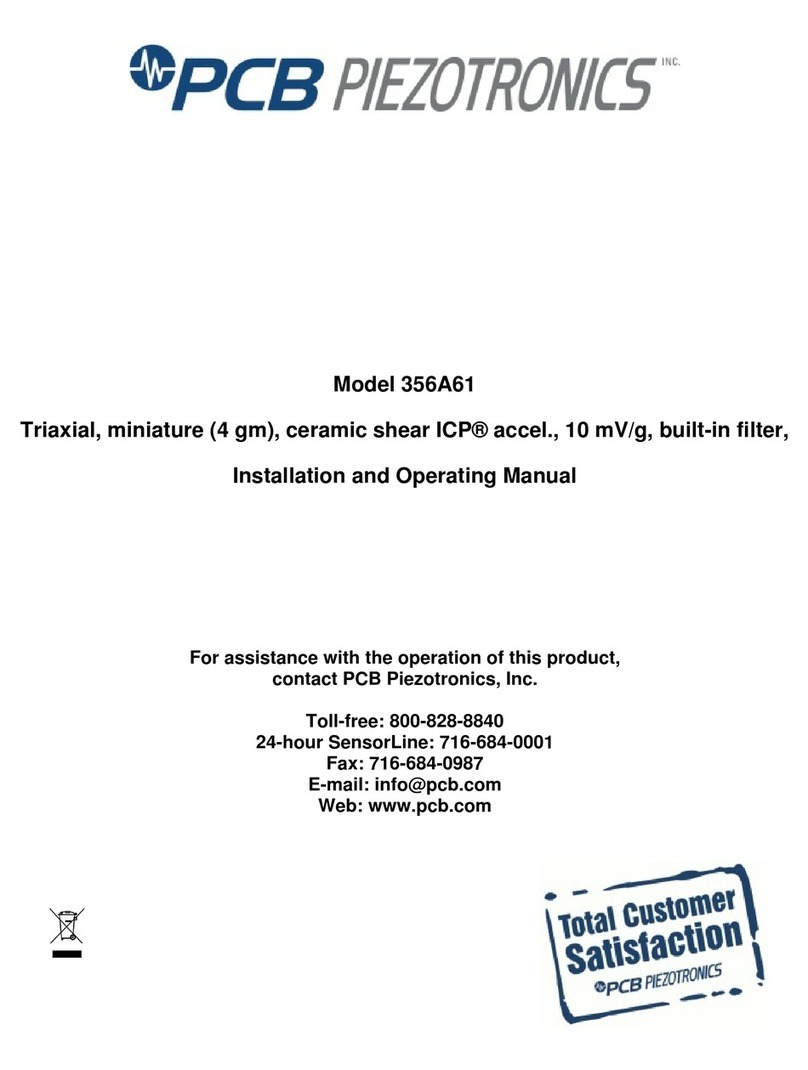
PCB Piezotronics
PCB Piezotronics 356A61 Installation and operating manual

CEM
CEM 9702 Operating instruction

Amprobe
Amprobe UAT-610 quick start guide
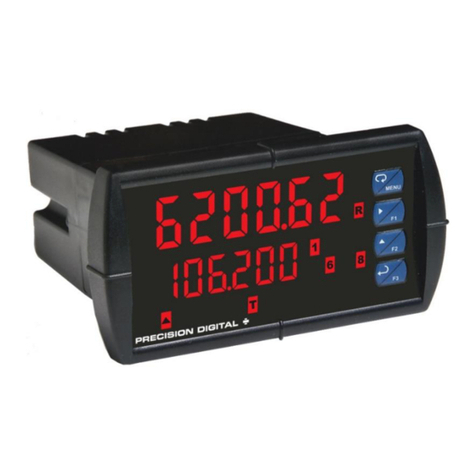
Precision Digital Corporation
Precision Digital Corporation ProVu PD6200 quick start guide
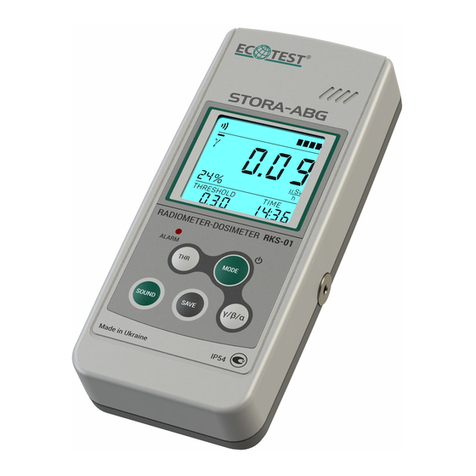
ECOTEST
ECOTEST STORA-ABG RKS-01 operating manual

FitSense
FitSense FS-1 Athlet's Manual
